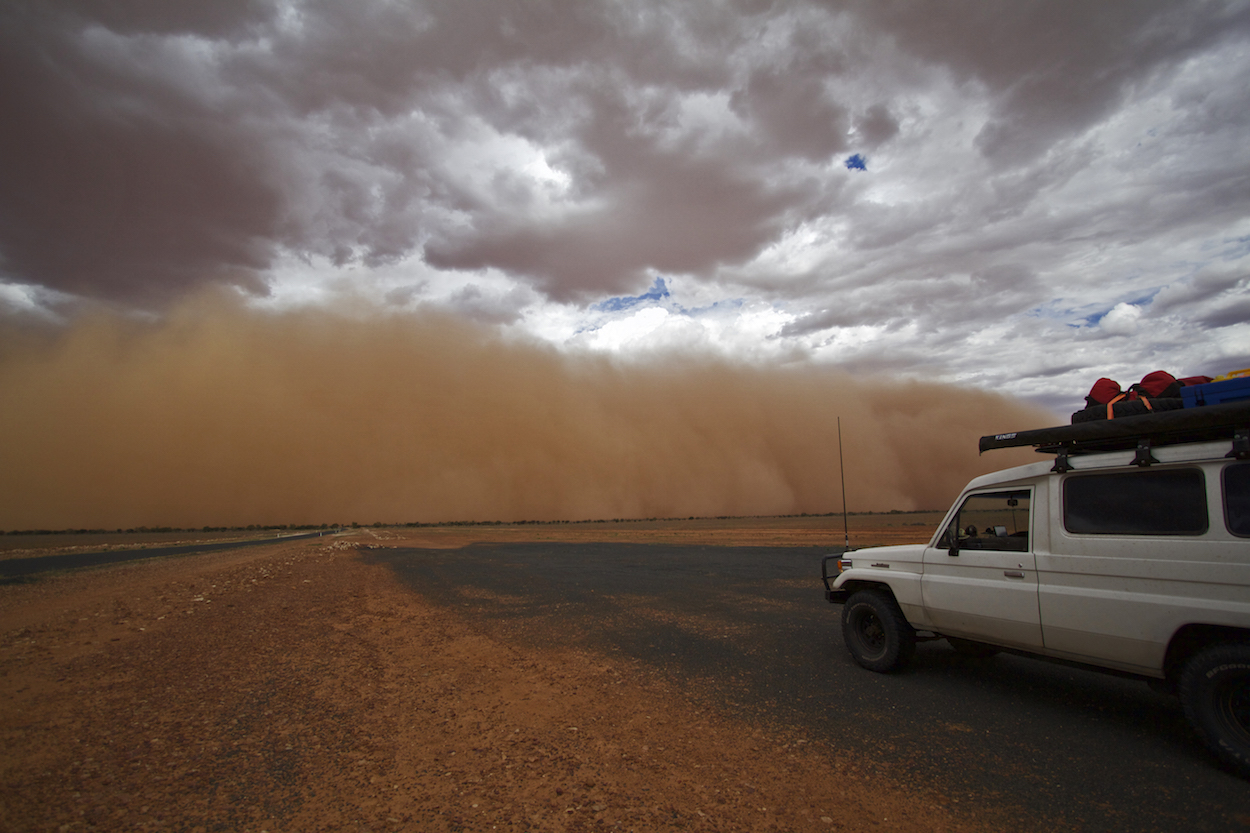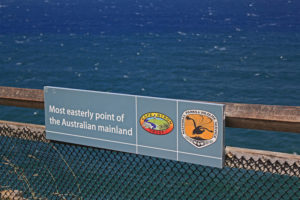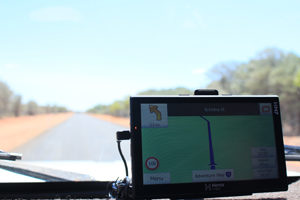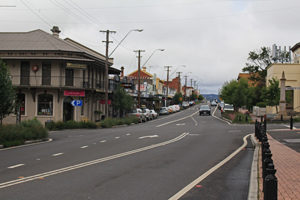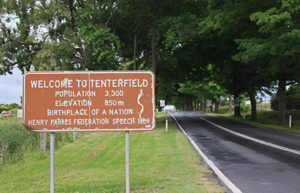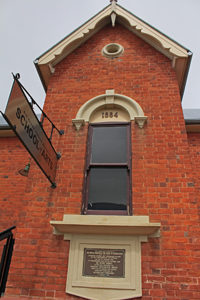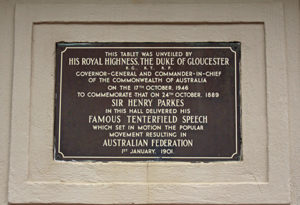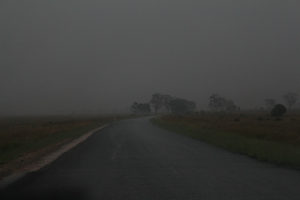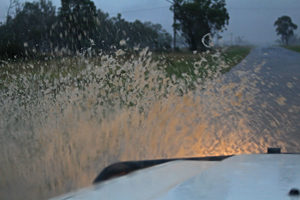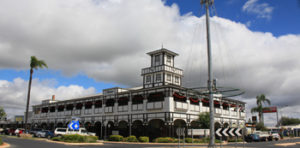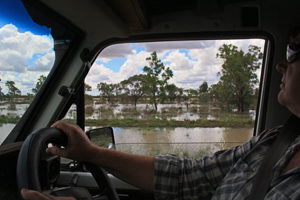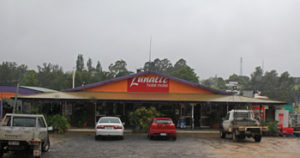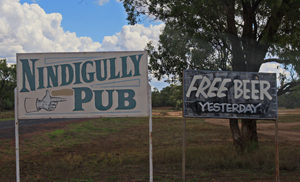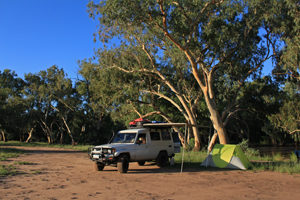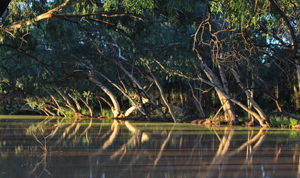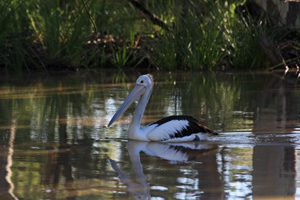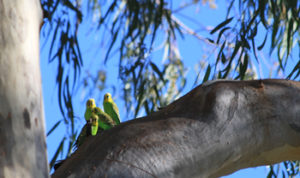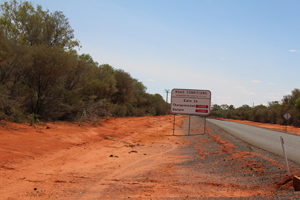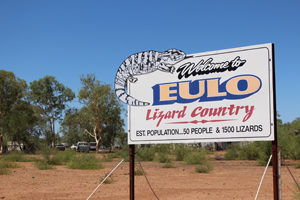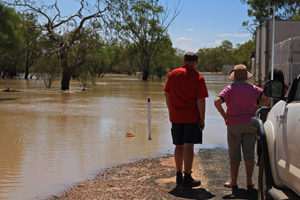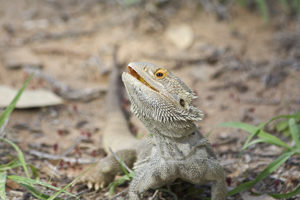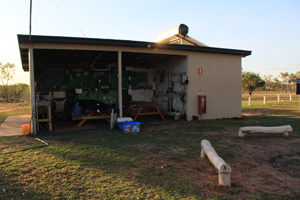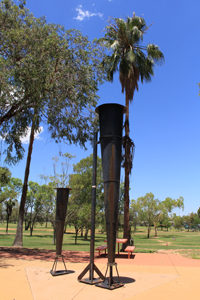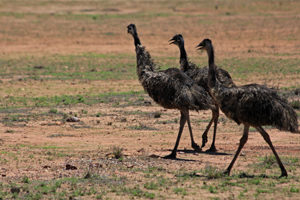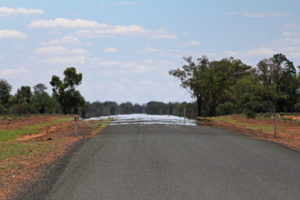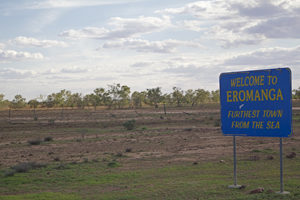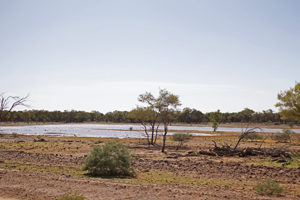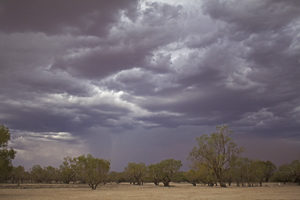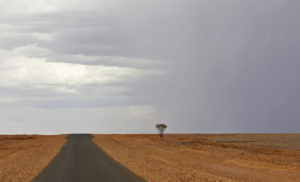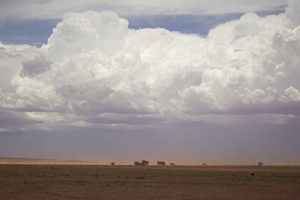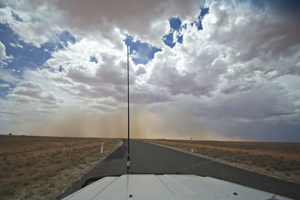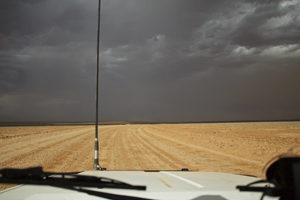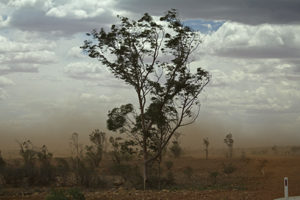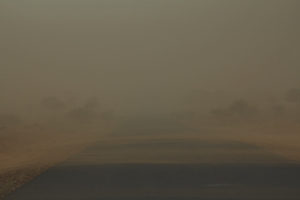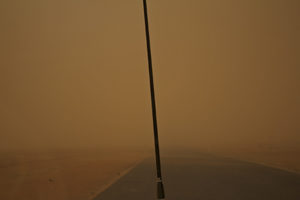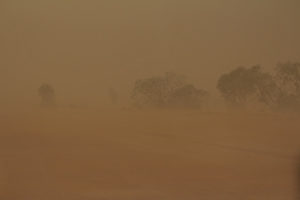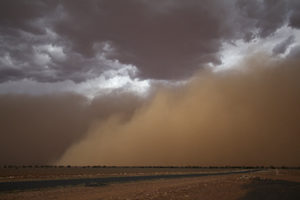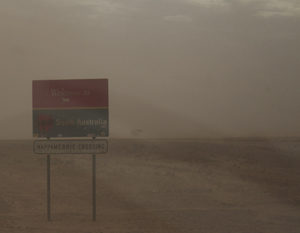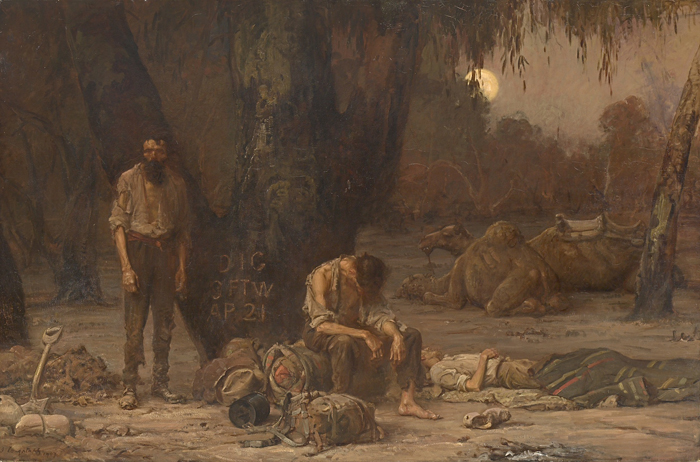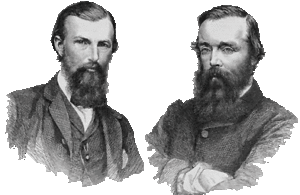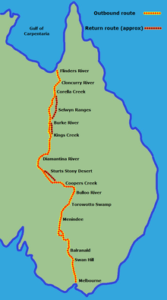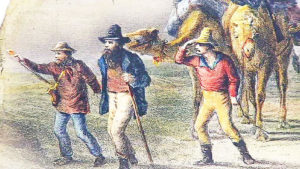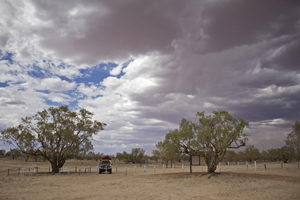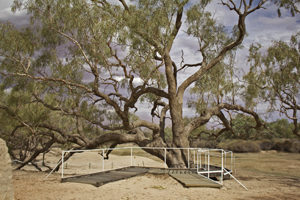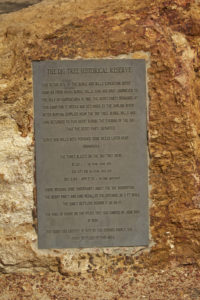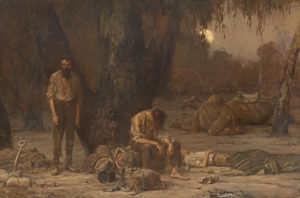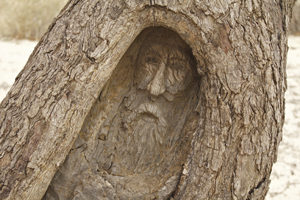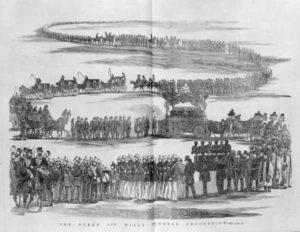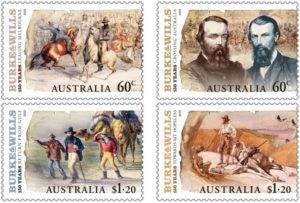We were on our way to Lake Eyre. We weren’t even planning to go there, but just a six word message started a 3,000km detour. The joy of unplanned vagabonding!
Our journey began right on the edge – as far from the red centre as we could get – on the most easterly point Australia at Byron Bay lighthouse.
We were heading north to Cape York. But one text message from Geoff’s brother, Chris, to say “there is water in Lake Eyre” – an extremely rare occurrence – and we turned left and west – direction, the aptly named Adventure Way and a 2,500km detour from the original plan.
One of our first stops was an unassuming high street with a big claim to fame:
Tenterfield is credited as being the place where the Australian nation was born, following a fiery speech by Henry Parkes, a local politician strongly advocating unity of the colonies.
Such was the persuasiveness of his argument that is sparked the movement which produced the federation just over a decade later.
After Tenterfield there was not so much fire, but water. And it wasn’t long before we were an integral part of nature’s story.
Torrential rain at Goondiwindi meant camping was cancelled in favour of a nice dry room at the splendid Victoria Hotel and although we left in bright sunshine the boggy roadsides told a different story.
And many people thought we were crazy to do the trip in high summer. The signs were everywhere
But so was the welcome.
Nindigully Pub is a classic outback institution, miles from anywhere and also closed when we got there. But they opened up and offered a welcome cold beer when we pulled up.
They also had all the gossip despite their remote location – something we found repeated at every stop!
At Bollon the one-street town provides a beautiful free campsite alongside the river.
When we arrived the locals had pulled up their chairs to watch the waters as they lapped at the sides of the road. We met Lonnie, the local policeman, general store-owner, gas station manager, camp oven cooking expert and world champion sheep shearer.
Next stop Cunnamulla, where we were told that the road ahead at Eulo was flooded and we couldn’t get through.
Eulo normally prides itself on the fact that the 50 residents share the town with 1500 lizards, but on that day it had a different claim to fame.
It wasn’t just a flooded road, but also a washed out bridge that stopped us and everyone else in their tracks.
We turned around and headed back to Cunnamulla only to discover the roadside show at Bollon had just got better and that road was now washed out too! Our only option for a bridge over the river was 300km north, and so began a 600km detour from our detour. We were starting to appreciate the trials of outback travel.
We were also beginning to really appreciate the generosity of outback communities. At Wyandra the town laid on a gorgeous free campsite, complete with fire pit, solar showers, a camp kitchen and a mob of kangaroos for company.
From Wyandra we continued our northern loop around the floods, through Charleville, where appropriately, the summer heat started to crank up again. An average day was topping 40 degrees. Charleville was most memorable to us for the marvelous Clement Wragge, the self-styled “rain-maker” who tried in vain to bring water during one of the worst droughts in the region.
His fantastic Stiger Vortex rain canons designed to fire gases into the atmosphere that create clouds and therefore rain. The guns failed and the drought continued for many more months. We could have done with a few canon firings that day, as the mercury continued to rise. We stopped counting at 48.5degrees during the day and a balmy 37 degrees overnight, in a nylon tent!
Next stop Eromanga – a town whose name has made it famous in Japan for meaning cartoon porn or erotic manga.
It’s dusty, deserted streets didn’t feel erotic, but there was something cartoonish about the Canadian campsite manager who was deeply suspicious of our intentions, claiming no one had passed through the area in a month.
Onward we pressed heading toward Innamincka. It was not far from this isolated hamlet that two of Australia’s greatest failed adventurers, Burke and Wills met what some would say was their inevitable end. It is a story worthy reading and remarkable in it relentless hopeless endeavour. You can find our short version of it in The Long March to Failure.
Full of stories of disaster we modern-day adventurers were painfully aware of the darken skies above us and set out for Innamincka – which boasts a pub, an hotel and that’s about it. It was also our starting point for the Strzelecki Track.
Burke and Wills may have planned badly, but even they couldn’t be blamed for the brutal nature of Australian outback in the summer. We soon came to appreciate some of their pain.
What started out as a hot, clear blue day soon became iron-dark and brooding.
Before long the last bit of tarred road had given way to dirt and we were facing dueling storms – with half the sky blackened with thunder-clattering clouds and lightening bolts and the other a red-earth mass lifted off the ground more than a kilometer high and tens of kilometers wide.
Alone on the road we could see nothing all around, but had no choice but to keep going. Bad as the dust storm was, getting stuck on a dirt road a long way from nowhere in a thunderstorm was worse. The mud-sucking qualities of an outback track are as legendary as the tracks themselves.
The pictures tell the story better than we can
We finally punched through the dust storm and landed in Innamincka. Geoff poured kilos of dirt out of the air filter and the landlord poured cold beer.
All of that and we still hadn’t even got to the Tracks. But next stop and next story – we will take you down two of the classic Australian outback tracks roadtrips.

